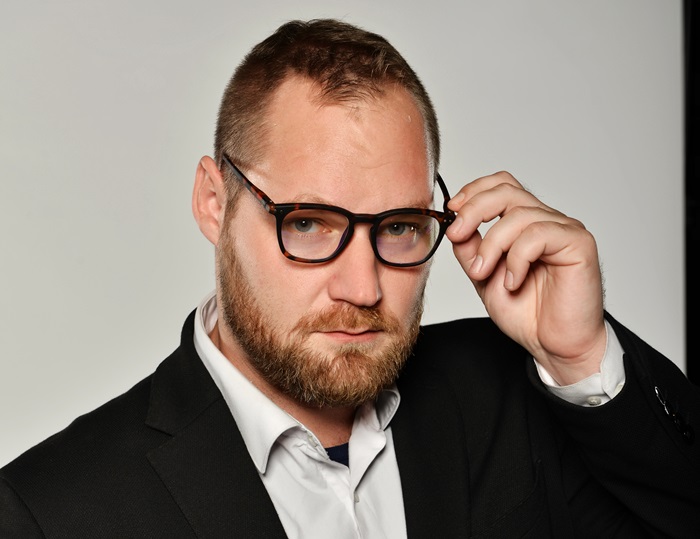CNN Prima News will launch the main phase of its pre-election coverage for this year’s parliamentary elections at the end of August. The news channel aims to apply the most comprehensive approach to the elections in its history, says CNN Prima News Editor-in-Chief, Tomáš Vojáček, in an interview. Digital platforms such as the CNNPrima.cz website, social media, HbbTV, podcasts, and mobile apps are expected to play a key role. This multiplatform approach is one of the central aspects of the digital transformation that CNN Prima News is undergoing, working closely on this with CNN International. The goal is to bring news closer to new audience groups, reach them in environments where they naturally spend time, and offer them content in formats that are understandable and easy to share. “The aim is to become the most significant domestic news player with the largest reach across all platforms,” says Tomáš Vojáček.
On the occasion of the fifth anniversary of CNN Prima News broadcasting, you stated that this year’s autumn elections will be covered very extensively and comprehensively—more precisely, the most extensively in your history so far. Could you describe what the election coverage will look like?
I can give you at least a partial overview; the full details will be announced during the summer. It will be the most extensive broadcast of special projects that we have produced since CNN Prima News was established. In fact, we have already kicked it off with the 100 Days to the Election debate, which took place on 19 June and, judging by viewership [Editor’s note: share 10.44%, age 15+] and audience feedback, was very well received. However, the main phase will begin towards the end of the summer holidays.
On 17 August, we will air a special edition of Partie Terezie Tománkové titled 50 Days to the Election, featuring two groups of four politicians selected based on the latest pre-election polls. This will mark the launch of a full-fledged pre-election broadcasting schedule. A week later, we will begin incorporating proven formats and adapting existing ones to fit the pre-election mode.
For example, the show Co na to vaše peněženka (What Does Your Wallet Say?) will air twice a week, giving space to economic experts from various parties to debate specific topics that are interesting to voters. We will also bring back formats like Divoká karta (Wild Card), which gives a chance to candidates lower on the party lists or from non-parliamentary parties. Starting 1 September, we will launch a series of debates in the large studio. They will run at least twice a week. We will begin with regional debates.
The first debate marking 100 days before the election was scheduled to air before the summer holidays. Why did you choose such an early date, and what were you aiming to achieve with it?
We had been planning this format well in advance. We did something similar back in 2021, though it wasn’t such a large-scale debate and didn’t include a live audience in the studio. Our goal was to be the first to offer viewers a comprehensive debate featuring the main election contenders. At the same time, we were aware that summer would be a relatively quiet period. In 2021, most party programmes were already public, whereas today, a hundred days before the election, only some have been revealed. Moreover, the circumstances gave the debate additional significance, as it took place the day after a vote of no confidence in the government and just before the start of several court proceedings in cases that have caught the public’s attention. All of this showed that our timing was right.
You aimed to be the first with the opening debate. Do you also want to be the last with the final one? In other words, will you be competing for the Thursday evening broadcast slot, which usually belongs to Czech Television, for the final debate before the parliamentary elections?
Our strategy is clear: we are focusing on ourselves and have a detailed media plan that outlines exactly what we want to broadcast and when. We have already begun implementing this plan and know when each phase will be activated. We definitely won’t be getting involved in the “Thursday night battle.” Both viewers and politicians know that our main - or if you will, final - live debate will take place on Wednesday. It will be preceded by an intensive schedule of debates. We will leave Thursday to the others.
It’s not just a television media plan. It’s a comprehensive project that will span our entire multiplatform network, including television, the web, social media, HbbTV, podcasts, and prima+.
We definitely won’t be getting involved in the “Thursday night battle.” Both viewers and politicians know that our main - or if you will, final - live debate will take place on Wednesday. It will be preceded by an intensive schedule of debates.
Tomáš Vojáček
You also mentioned a stronger multiplatform approach for the next five-year period in connection with the extension of the CNN Prima News license for another five years. What exactly should we understand by that?
It will involve a broader integration of all our content and its distribution across all the platforms that CNN Prima News and the entire Prima group operate. We have television broadcasting, websites, social media, HbbTV, podcasts, prima+, and other channels. We plan to further strengthen platforms like podcasts and add new ones. We can’t rely on viewers simply turning on a single traditional platform—television. On the contrary, we must actively go to where they are. Distribute content across channels and take every opportunity to draw them back to our content.
Television broadcasting remains the foundation, especially for current, relevant, and balanced news coverage. But we are adding more layers: articles, videos, QR codes with special content, vertical videos that explain key events. We are also planning interactive features, such as the ability to view 3D models of military equipment or visualisations of election data directly on users’ devices. Viewers can download, explore, and interact with them. They can send us their own videos, comments, and vote on what they find most interesting. We want to create a truly connected media ecosystem that immerses the viewer—whether they are engaging with content on a screen, in an app, on the web, or in augmented reality.
Do you plan to reorganise the editorial structure, change responsibilities, or enhance team collaboration because of this?
Within the Prima group, we have transitioned to segment-based management. CNN Prima News—that is, television, web, and multiplatform—fall under one segment called “Digital Media.” The transformation is already underway; we are fine-tuning processes and exploring everything we can produce and distribute. For example, we plan to increase the production of vertical videos for social media, improve coordination between TV and online reporters, and develop new types of content that will allow for greater reach across all platforms.
A great inspiration for us was the recent CNN summit in London, where we met with representatives from all partner stations. CNN’s CEO, Mark Thompson, spoke there about digital transformation, and we shared experience with colleagues from other countries. That was a crucial source of inspiration for us.
Will you be using any of the tools available to CNN International – technological or editorial – during the transformation?
I can’t go into too much detail, but I can confirm that as part of the digital transformation, we will be working closely with CNN International, which is currently undergoing an intensive transformation of its own. That’s also why we participated in the mentioned summit.
Who manages the online news after the previous online news director, Tomáš Večeřa, left for Deník?
The digital media segment is managed by Martin Švehlák. I am the deputy director and editor-in-chief of the television news section. Josef Šťastna is the editor-in-chief of the online section. A new Audience Development service department has been established, which reports to the Commercial Director of Online Development, Hung Nguyen.
As part of digital transformation, we will be working closely with CNN International, which is currently undergoing an intensive transformation of its own.
Tomáš Vojáček
And what is the goal of the transformation? Where is it supposed to lead, and what should be the outcome?
The goal is to become the most significant domestic news player with the widest reach across all platforms—television, web, social media, HbbTV, and others. We also want to strengthen our reputation, as our trustworthiness, according to a Reuters Institute study, is increasing—unlike that of our competitors. We are already the most trusted commercial news media in the Czech Republic, which we are proud of and see as a commitment for the future. At the same time, we want to increase the cumulative reach of our news and journalism. This involves not only the news but also other genres and formats programmatically connected to the news, such as crime, show business, podcasts, and special documentaries.
CNN Prima News’ share of the television market has exceeded 2% after five years of broadcasting. How far do you think CNN Prima News can grow? What is realistic to achieve, considering trends and the expected behaviour of TV viewers in the future? Is it possible to double CNN Prima News’ share and catch up with the competition?
For example, last week we had almost a 3.5% weekly share [Editor’s note: week 25, age 15+]. But I have long said that a news channel is a marathon rather than a sprint. Building a strong news channel is not about starting and finishing the job in a few months. It is a long-term effort, requiring patience and perseverance. The important thing is that we have been growing for the fifth year in a row. It is true that there have been many significant news events during that time, but at the same time, every week we come up with new special broadcasts and constantly think about what additional content to offer viewers compared to the competition.
Today, we know much better which formats work for our viewers and what they expect. A typical example is the birthday of King Charles III. We could have thought that a three-and-a-half-hour special broadcast on a Saturday at midday, on the first summer day with temperatures of 30 degrees outside, stood no chance. But viewers showed up. That’s because we know what they want and can prepare it in a way that captures their interest.
Source: mediaguru.cz

